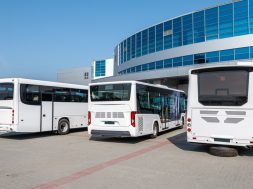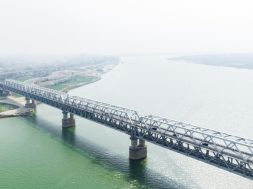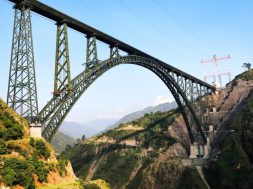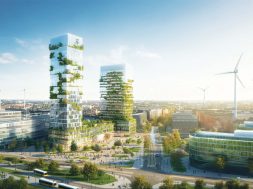Infrastructure needs to be great for a great nation
“Need is for the right training and processes to be put in place so that vast pool of our technical force is benefitted,” says Architect Satyakam Garg
Large-scale infrastructure projects in world are achieved by collaborative design efforts of many agencies. Multimodal transport hubs, metro and mass rapid transport systems, airports, railways, seaports, and container terminals are essential projects for a developing country, and successful projects are indicative of a nation’s progress. These projects require implementation of new technologies and expertise in international design.
Experience of working on international project, exposure to such projects through case studies and travel, and understanding of applicable norms which are not generally found in local building by-laws are some of the prerequisites for the design teams working on such projects. Many a time various parts of large-scale projects are broken into smaller components which may be designed by different teams. Mostly such projects are time bound and affect public; existing infrastructure design and construction happens side by side. For perfect delivery of the project, a team of designers who coordinate and produce working designs for construction of such projects is normally stationed on-site. This challenging job profile is needed for detailed coordination of designs and production of accurate working drawings for the projects. For infrastructure projects, such teams are vital and success of these teams is directly proportional to the quality of implemented project.
Architect Satyakam Garg, a graduate from Sir J. J. College of Architecture, Mumbai, started his career in 1990 with IAG Consultants Pvt. Ltd. where he was exposed to use of latest technologies and supported in his experiments with CAD which had just entered in India. One of the remarkable projects was “sub regional development plan” of Vasai and Virar, where for the first time aerial digital photogrammetric data was used for urban planning.
In 2001 Mr Garg started working as Architectural Design Manager on first underground metro of New Delhi with a Japanese Consortium (Kumagai-Skanska-HCC-Itochu Joint Venture). The project was completed 7 months ahead of schedule.
In 2006 Mr Garg joined Dubai Metro Project as Architecture Manager with a Japanese-Turkish Consortium (Obayashi-Mitsubishi-Kajima-Yapi Merkeji) to handle the design coordination and implementation of one of the best metro system projects. This project is a case study to the world as to how a public transport system should be.
Mr Garg has worked on Delhi’s Airport Express Line and Mumbai Metro Line 1 as Head Architect for Reliance Infrastructure. Currently as the Head – Metros and Railways,
Mr Garg is handling designs of Delhi Metro Phase III underground stations and Kolkata Metro underground stations with Stup Consultants Pvt. Ltd. Architect Garg is also handling design of metro park and ride structures for Riyadh Metro as the Lead Architect to BACS consortium.
For Indian infrastructure projects, Mr Garg feels that a lot has to be done on making our architects and engineers along with formal college education to effectively work. Training to architects for international level of working processes is needed at college level, especially in design management and coordination techniques, drawing production standards, method statements, and quality management during the production of designs. Currently, architects get to learn these only if they land up with a job in a company which has good systems built in. Professional architect colleges need to understand that we have to produce architects who are trained and geared to take up such job challenges in international market.
Furthermore, for nation building and pride of progressive outlook, infrastructure projects in India must provide a clean, fully functional and aesthetic appearance to users. It is a shame when we see that recently opened airports are flooded with water or manholes covers missing. Similarly, we come out of a shining airport and are forced to drive on broken roads with ill-designed pavements. Although these are maintenance- and systems-related issues, many of these are results of non-coordinated designs when multiple agencies are involved.
Fee structure for consultants in India is going down day by day. Even the global consultants are in race quoting low fees just to enter the market. This has resulted in another kind of scenario where there are not enough designers to work on a project. This is leading to lesser design drawings than required and affected quality. The corner cutting results in lesser time and poorer designs which are not going to help in infrastructure projects implementation. This has also health and safety concerns for working architects who have to often work long hours in absence of requisite staff.
Corruption, which prevails in implementing government departments, is mostly responsible for shoddy works being done on such infrastructure projects. Most of the time aesthetic requirements are not implemented on site in name of funds, complexity or favourism to a particular vendor. Architects are often told to revise their designs and the resultant project remains an eye sore.
Also local site context with infrastructure projects need to be developed. This requires a team effort and coordination of departments. Architects who are associated with a particular agency are often constrained to work within their work limits. But for a larger picture and things to work perfectly, the need for coordination between various agencies is needed. In future for a good urban experience departments need to develop this understanding for coordination and sharing of information.
India’s population is massive and Architect Satyakam Garg is confident that in coming times need for better infrastructure even at far off areas is not ruled out. To make a great nation, the infrastructure must be great nationwide. This opens up doors of opportunities for architects and engineers. Need is for the right training and processes to be put in place so that vast pool of our technical force is benefitted. Better infrastructure will also open up other avenues for architecture.
Cookie Consent
We use cookies to personalize your experience. By continuing to visit this website you agree to our Terms & Conditions, Privacy Policy and Cookie Policy.









